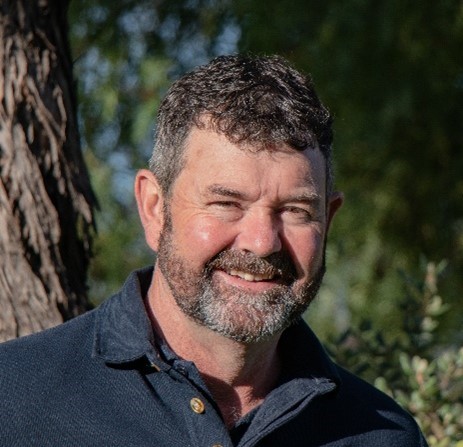3 December 2025
Keeping botrytis bunch rot under control is vital for producing clean, high-quality fruit. However, occurrence of fungicide resistance is making this task more difficult.
This eBulletin includes a summary of conditions conducive to botrytis developing in the vineyard, and why fungicide resistance in botrytis is a problem, how to identify it, test for it, and manage it effectively.
About botrytis bunch rot
Botrytis bunch rot is one of the most prevalent diseases of grapevines in Australia. The disease is caused by the fungus Botrytis cinerea, which affects dead, injured, or senescing grapevine tissue, a situation often seen in berries, particularly when they are damaged or overripe. When the following set of conditions arise, botrytis bunch rot can become a problem:
| Factor | Conditions |
| Weather conditions |
|
| Growth stages |
|
| Susceptibility |
|
| Canopy size and management |
|
What is fungicide resistance in botrytis and why does it matter?
Over time, Botrytis cinerea can change genetically, reducing the effectiveness of fungicides and sometimes making them ineffective altogether. For winegrape growers, this can mean fewer reliable tools to manage the disease, the need for more frequent spraying, increased environmental impact and production costs, and even the risk of crop losses or fruit rejection.
Read more about how fungicide resistance occurs and how to avoid it here.
How do you know if you have resistance to botrytis fungicides?
If you are applying fungicides each year and the incidence and severity of botrytis bunch rot seems to be getting worse, you may have fungicide resistance or reduced sensitivity.
Botrytis fungicide resistance detections in Australian vineyards
Recent research led by South Australian Research and Development Institute (SARDI), a research division of the Department of Primary Industries and Regions (PIRSA), in collaboration with Curtin University, Centre for Crop and Disease Management (CCDM) has confirmed the detection of botrytis resistance to several fungicide groups commonly used in vineyards.
| Active ingredient | Fungicide Activity Group | Resistance status |
| pyrimethanil | 9 | Detected |
| fludioxonil | 12 | Detected |
| fenhexamid | 17 | Detected |
Source: Curtin University, Centre for Crop and Disease Management
While resistance to these major groups has been detected, there are other fungicide groups for which resistance has not yet been reported in Australia. A range of registered products for each active ingredient can be found in Table 2 of the 2025/26 Agrochemicals registered for use in Australian viticulture, commonly known as the ‘Dog book’. A full list of detections from this research can be found on page 18 in the 2025/26 ‘Dog book’.
How can you test for botrytis resistance?
If you suspect botrytis fungicide resistance, a free national testing service to monitor fungicide resistance in botrytis, powdery mildew and downy mildew in winegrapes is available (until June 2027).
Samples for botrytis resistance testing can be submitted to the Curtin University, Centre for Crop and Disease Management by following the detailed sampling instructions here. Biosecurity considerations apply. Prior to sending samples to the laboratory, please contact lincoln.harper@curtin.edu.au.
This testing service is part of a research project led by SARDI in collaboration with Curtin University and the AWRI, and funded by Wine Australia, the Cooperative Research Centre for Solving Antimicrobial Resistance in Agribusiness, Food, and Environments (SAAFE CRC), SARDI and Curtin University.
Importance of spray program management
Overuse of the same fungicide groups as part of a spray program is a key contributor to the development of botrytis bunch rot fungicide resistance.
One of the key information sources provided annually in the ‘Dog book’ to assist you in reducing botrytis fungicide resistance is the CropLife Australia resistance management strategy on page 16.
Before you order chemical products for the new season, review this strategy alongside your proposed spray program. In particular, take note:
- are you using an integrated disease management program, including canopy management and biologicals.
- of the fungicide group associated with each product you plan to apply;
- that all botrytis fungicide groups must be applied preventatively, that is before disease is present;
- of the suggested maximum number of times each fungicide group be applied in the season;
- of the suggested number of consecutive applications (if any) each fungicide group be applied in the season.
- of which fungicide groups when applied solo, should be applied in strict alternation with fungicides from a different group – Groups 7 and 11; and
- that some fungicide groups need to be followed by at least the same number of applications of fungicides from different groups.
Note that some fungicide groups and/or products are restricted or prohibited from use by some wineries. Refer to Table 2 in the ‘Dog book’ and your winery/grape purchaser’s guidelines before you spray.
In addition to reading the CropLife Australia resistance management strategies, always read chemical labels prior to spray application to ensure you are applying the correct treatment rate.
Further information
- AWRI fact sheet: Fungicide resistance
- AWRI information pack: Fungicide resistance
- AWRI information pack: Botrytis
- Agrochemicals registered for use in Australian viticulture, the ‘Dog book’
- AWRI helpdesk – call 08 8313 6600, or email helpdesk@awri.com.au.
Contact
AWRI helpdesk phone: 08 8313 6600 (option 1)
Email: helpdesk@awri.com.au Website: http://www.awri.com.au
Address: Wine Innovation Central Building, Corner of Hartley Grove & Paratoo Rd, Urrbrae (Adelaide), SA 5064
Acknowledgements
The fungicide resistance testing work has been supported by the SAAFE CRC whose activities are funded by the Australian Government’s Cooperative Research Centre Programme.
The AWRI thanks Mark Sosnowski and Ismail Ismail from SARDI and Lincoln Harper and Fran Lopez Ruiz from Curtin University for their review.
This eBulletin is supported by Wine Australia with levies from Australia’s grapegrowers and winemakers and matching funds from the Australian Government. AWRI is a member of the Wine Innovation Cluster in Adelaide, SA.








